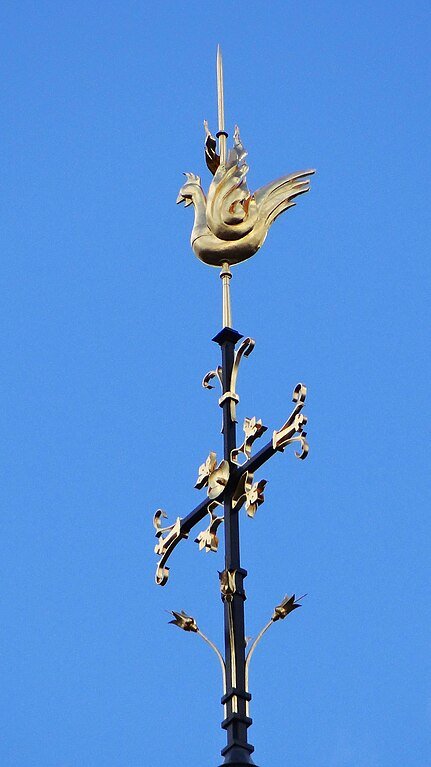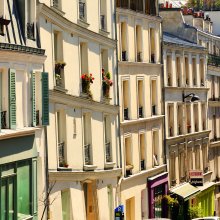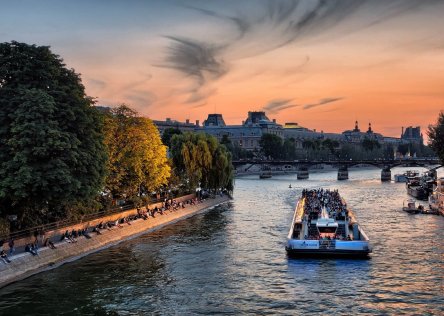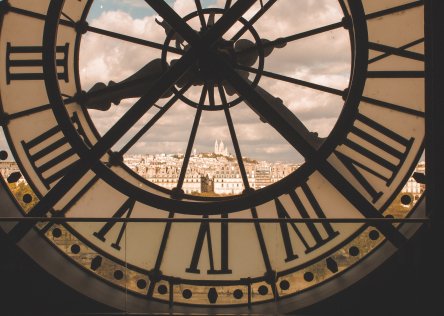On April 15th, 2019, the world watched on in horror as a devastating fire tore through Notre Dame Cathedral in Paris. The blaze destroyed much of the roof, wooden framework, and the central spire of this centuries-old Paris landmark and architectural masterpiece.
French President Emmanuel Macron pledged to rebuild the cathedral, and after five years of incredible restoration efforts, Notre Dame rises again.
On your next trip to Paris, look out for the following restored features in the Cathedral of Notre Dame:
Browse our Paris tours and get inspired for your next trip to France
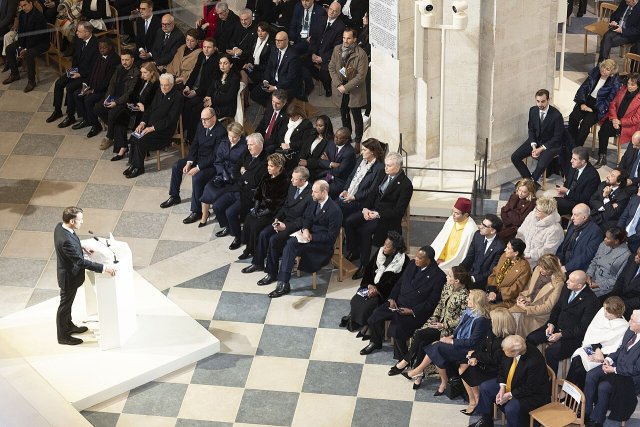
©
Quirinale.it, Public Domain
The Limestone
If you’ve already visited Notre Dame, and have recently seen photos of the restored cathedral, you’ll notice that it now looks much lighter and cleaner. This is because the cathedral’s limestone has been cleaned and, where necessary, replaced.
Experts analyzed the original limestone’s features, such as fossils that were present, to determine its origin. It was traced to northern France, so to ensure a close match, the new limestone was sourced from quarries in the same region. Over 40,000 square meters of stone were restored, removing layers of soot, grime, and lead residue from the fire, revealing its luminous original beauty.
Today, visitors to the restored cathedral can see it much as it would have appeared shortly after its last restoration nearly 200 years ago.
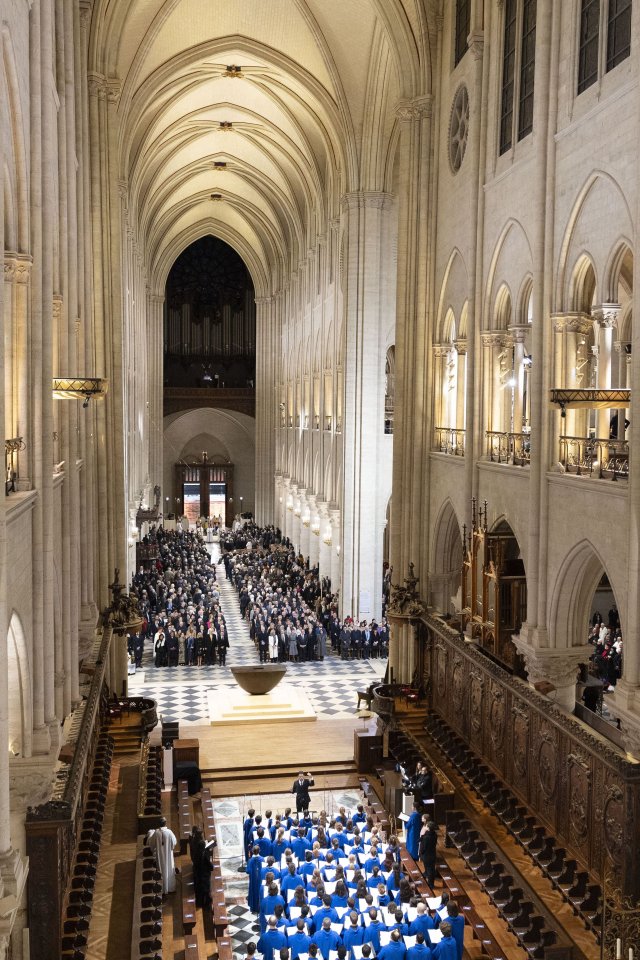
©
Quirinale.it, Public Domain
The Spire
The spire collapsed during the fire and has been meticulously reconstructed. Craftsmen combined traditional and modern techniques to rebuild its wooden base, lined it with lead, and topped it with a gilded golden rooster, reminiscent of a phoenix with its flamed feathers.
The Wooden Roof
Known as “the forest,” the wooden roof was entirely rebuilt using 1,200 oak trees from across France. France has the largest reserve of mature oaks in the world, and three of those used in the restoration were 230 years old. The tallest oak to be felled for the restoration was 88 feet high. Much of the wood was hand-sawn and shaped with axes, with skilled carpenters replicating the techniques used to build the original roof in the 13th century.
The Gargoyles
Experts used digital scanning techniques and traditional sculpting methods to restore the gargoyles and chimeras that were damaged in the fire. These were part of the cathedral’s neo-Gothic features, and were added to the cathedral during the restoration of the mid-19th century, overseen by architect Eugène Viollet-le-Duc.
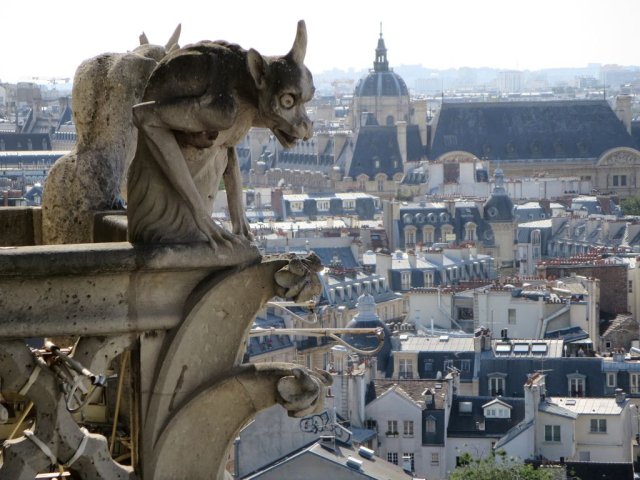
©
The Choir, Side Chapels, and Stained Glass Windows
Even before the fire, decades of grime had accumulated on the walls, windows, and other features inside Notre Dame. During the restoration, the choir and side chapels were carefully cleaned, revealing vibrant reds, golds and blues. The stained-glass windows, including the iconic rose windows, were also cleaned and restored, allowing color and light to once again illuminate the inside of the cathedral.
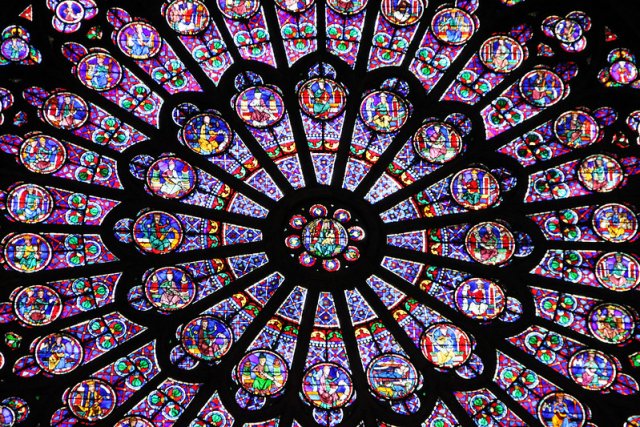
©
The Chalices and Altar
The original altar, lectern and seating were all destroyed in the fire. These have been replaced with a new bronze altar and chalices for the sacraments, with 1,500 new wooden chairs for the congregation. The Crown of Thorns is now housed in a newly redesigned reliquary located behind the choir.
The Organ
The cathedral’s organ and its 8,000 pipes were disassembled, cleaned, and reassembled. This monumental task included replacing leather linings and fine-tuning each pipe, a process that took several months to complete.
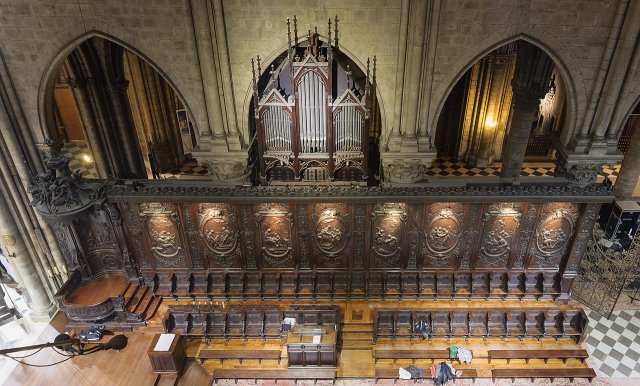
©
The Medieval Rood-Screen
Archaeologists uncovered remnants of a 13th-century rood-screen buried beneath the cathedral. A rood-screen was traditionally used in medieval churches to separate the congregation from the clergy, symbolizing the division between the sacred and the secular spaces within the church. The 36-foot stone partition features intricate sculptures portraying the life of Christ. It was dismantled in the 18th century due to changes in church regulations and carefully laid beneath the ground of the cathedral. It is currently being studied and will eventually be put on display.
Still to Do
While the cathedral will reopen on December 8, restoration is ongoing. Scaffolding still surrounds parts of the building, and work on the apse and sacristy will continue for years to come.
Plans are also in place to redesign the esplanade and create a museum to celebrate Notre Dame’s history.
Notre Dame’s revival is a testament to skilled craftsmanship, dedication, and the importance we place on our heritage. From tragedy to triumph, the cathedral remains a beacon of hope, right at the heart of Paris.
If you would like to visit Paris in 2025 and see the newly restored Notre Dame Cathedral, we warmly invite you to browse our tours including a stay in Paris.
You may also contact us and let us know your ideas and wishes for your trip to France. We will do everything we can to plan an ideal self-drive tour of France - just for you!


